Topics
Natural Resources – Air, Water and Land
- Natural Resources
- Atmosphere and Its Layers
- Air Around Us
- Composition and Components of Air
- Importance of Air
- Air Pollution and Its Causes
- Water: Our Lifeline
- Availability of Water
- Composition of Water
- Importance of Water
- Scarcity of Water
- Land
- Soil Formation
- The Importance of Conserving Earth’s Natural Resources
The Living World
Diversity in Living Things and Their Classification
Disaster Management
Substances in the Surroundings –Their States and Properties
Substances in Daily Use
Nutrition and Diet
- Nutrients and Nutrition
- Component of Food
- Carbohydrates
- Diseases Due to Deficiency of Carbohydrates
- Fats (Lipids)
- Diseases Due to Deficiency of Fats
- Proteins
- Diseases Due to Deficiency of Proteins
- Vitamin and Minerals
- Diseases Due to Deficiency of Vitamin
- Diseases Due to Deficiency of Minerals
- Fibre
- Diseases Due to Deficiency of Fibre
- Water
- Diseases Due to Deficiency of Water
- A Balanced Diet
- Nourishment and Malnutrition
- Food Adulteration
Our Skeletal System and the Skin
Motion and Types of Motion
Force and Types of Force
Work and Energy
- Force, displacement and work
- Energy
- The relationship between work and energy
- Forms of Energy
- Mechanical Energy
- Power Plants Based on Thermal Energy
- Light Energy
- Sound energy
- Chemical Energy
- Transformation of Energy
- Energy Resources
- Conventional energy resources or non-renewable energy resources
- Non-conventional energy resources or renewable energy resources
- Energy saving and green energy
Simple Machines
Sound
Light and the Formation of Shadows
Fun with Magnets
The Universe
- Introduction
- Experiment 1
- Experiment 2
- Experiment 3
- Experiment 4
- Experiment 5
- Experiment 6
Introduction:
A magnet always settles in the north-south direction. The magnetic force is concentrated at the two ends or poles of a magnet.
- If a magnet is divided into two parts, two independent magnets are formed. It means that the two poles of a magnet cannot be separated from each other.
- A magnetic material acquires magnetism when placed near a magnet. This magnetism is called induced magnetism.
- There is repulsion between like poles of a magnet, while there is attraction between the opposite poles.
Experiment 1
1. Aim: To observe how a bar magnet always settles in the north-south direction.
2. Requirements: bar magnet, thread and stand.
3. Procedure
- Tie the bar magnet with a thread and hang it from the stand.
- Let it settle and note the direction.
- Turn it around and let it settle again, noting the direction each time.
4. Conclusion: A magnet always settles in the north-south direction. The north pole points to the north, and the south pole points to the south.
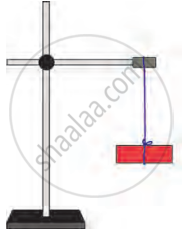
The direction in which the magnet settles
Experiment 2
1. Aim: To determine where the magnetic force is strongest on a magnet.
2. Requirements: bar magnet, iron filings and sheet of paper.
3. Procedure
- Sprinkle iron filings on a sheet of paper.
- Pass the bar magnet over the filings and pick it up.
- Observe which part of the magnet attracts the most filings.
4. Conclusion: The iron filings stick to the magnet's two ends (poles) because the magnetic force is strongest at the poles (ends).
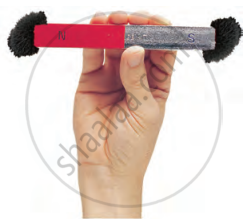
Magnetic power
Experiment 3
1. Aim: To understand that cutting a magnet creates two new magnets, each with north and south poles.
2. Requirements: bar magnet, scissors/knife, iron filings and sheet of paper.
3. Procedure
- Place iron filings on a sheet of paper and pass a bar magnet over them.
- Cut the magnet in half and repeat the procedure with the pieces.
- Observe how iron filings stick to both pieces.
4. Conclusion: After cutting the bar magnet in half and passing both pieces over the iron filings, you will observe that the iron filings stick to the ends of both smaller magnets. Each piece behaves like a complete magnet, with iron filings attracted to both ends.
This shows that even when the magnet is cut, both new pieces have their own north and south poles, just like the original magnet. The magnetic force is still strongest at the poles of both new magnets.
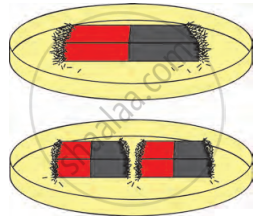
Characteristics of magnetic poles
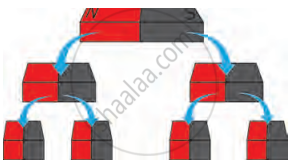
More magnets from one
Experiment 4
1. Aim: To observe how a material acquires magnetism when near a magnet.
2. Requirements: powerful bar magnet, iron bar, iron filings and stand.
3. Procedure
- Fix the bar magnet to a stand and place an iron bar below it.
- Bring iron filings near the iron bar and observe. Remove the magnet and observe again.
4. Conclusion: The iron bar becomes magnetic when near a magnet but loses magnetism when the magnet is removed. This is called induced magnetism.
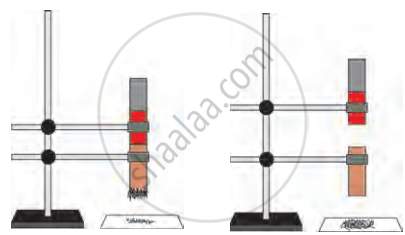
Induced magnetism
Experiment 5
1. Aim: To observe the behaviour of like and opposite poles of magnets.
2. Requirements: Two bar magnets and a stand.
3. Procedure
- Fix one magnet to the stand and bring the other magnet near it.
- Observe what happens when like poles and opposite poles face each other.
4. Conclusion: There is repulsion between like poles of a magnet, while there is attraction between the opposite poles.

Attraction and repulsion in magnets
Experiment 6
1. Aim: To understand how temporary magnetism is created in objects like nails or needles.
2. Requirements: needle/nail, bar magnet, and pins.
3. Procedure
- Rub the bar magnet over the needle/nail 7-8 times in one direction.
- Bring the needle or nail near some pins.
4. Conclusion: The needle/nail acquires temporary magnetism, allowing it to attract pins, but the effect lasts only for a short while.
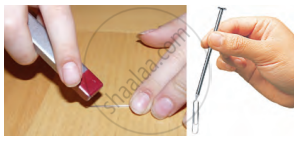
Artificial magnet
